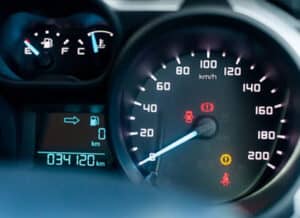Buying a new or used car from a manufacturer or dealership is usually a very big step to take. Taking this bold step without the right information and guidelines can lead consumers to make really big mistakes at the end of the day.
These common mistakes made by consumers usually end up causing inconveniences, and you wouldn’t want to end up with such a liability for the next couple of years. This article highlights the common car buying mistakes that you should try to avoid when buying a car in 2025.
13 mistakes to avoid when buying a car in 2025
The most common mistakes made when buying used cars are:
- Having an unclear budget.
- No previous research on car models and prices.
- Neglecting the car’s inspection and test drive.
- Looking for vehicles at only one dealership.
- Not getting a vehicle history report before making the purchase.
- Not negotiating the price.
- Being focused on the monthly payment when negotiating.
- Not considering the total car cost of ownership.
- Not reading the contract clearly.
- Ignoring financing options.
- Not considering the resale value.
- Buying a car without a warranty.
- Buying unnecessary extras.
Having an unclear budget
Not having a clear budget is one of the most common mistakes made when buying used cars. Before visiting the dealership or manufacturer, ensure that you have set a clear budget. Determine how much you want to spend on a vehicle: the purchase price as well as any additional costs such as taxes, fuel, and so on.
Having a clear budget when you are looking to purchase a car helps you streamline your options and browse through cars that you can actually afford.
No previous research on car models and prices
Another mistake that is quite common among car buyers is not carrying out a research on car brands and models, as well as their prices, before visiting the dealership. Most buyers just rush down to the dealership, hoping to find the perfect vehicle that they can afford. This is the wrong step to take, and it is not recommended.
We suggest conducting extensive research on various car brands and models. Look out for ratings and reviews from experts and other car owners. Compare the vehicle specifications of different models and select the best one for you. Read about recalls and other issues that are associated with the different models. Doing this would help you be aware of which vehicle is reliable and which is not.
READ ALSO: 10 Car Maintenance Tips That Can Prevent Major Repair Costs
Neglecting the car’s inspection and test drive
So many car buyers just want to pay for the vehicle as soon as possible. They overlook the fact that they are supposed to conduct an inspection. Buying a used car without an inspection can result in buying a vehicle with problems and defects.
With a proper vehicle inspection, you can be aware of dents, wear and tear, scratches, corrosion, or any other form of damage. A car inspection also goes along with a test drive. With a test drive, you are given the opportunity to take note of the car’s noises and vibrations, the steering feel, the comfortability of the seats and seatbelts, and more.
If possible, bring along a professional mechanic to inspect the car and take it for a test drive. One of the car-buying mistakes to avoid is skipping this step.
Looking for vehicles at only one dealership
This is another common mistake to avoid when buying a car. Make sure that you don’t streamline your research to only one dealership. Visit as many dealerships as you can, read their ratings and reviews, and closely observe the cars they have for sale. Are the brands reliable? Are the models trustworthy? Are there higher trims and options? These are some of the questions you should ask yourself while at any dealership.
Not getting a vehicle history report
Have you ever heard of odometer fraud? Well, you may make the mistake of purchasing a vehicle without proper knowledge of the actual odometer and mileage readings if you purchase a used vehicle without getting a vehicle history report. A vehicle history report is a document that provides a breakdown of the car’s history from its first owner to the current one. It shows every piece of information on the vehicle, such as accurate odometer readings, vehicle specifications, theft history, service and maintenance history, auction history with photos, sales history, accident records, damage history, and more.
Having this information first hand with a vehicle history report from Instant VIN Report gives you an edge over any dealer, and you can easily make an informed decision without making mistakes.
Not negotiating the price
Whatever asking price you find on the dealer’s sticker is not the final price. You have the option to negotiate, so do it properly. This is one of the used car buying mistakes that a lot of buyers make.
It is recommended that you negotiate before you agree to a certain price. While at it, make sure you begin your negotiations at 10 to 25% less of the price suggested by the seller or dealership. The asking price should be seen as a starting point, not as the final price.
This is why research is important. Making research on the brands and models would give you an idea of the fair market value of the vehicle you may be interested in. You can easily negotiate and get the best deal if you have a budget and are aware of the fair market value.
READ ALSO: Discover who owns a car with the VIN number or license plate
Being focused on the monthly payment when negotiating
When it’s time to negotiate, get your mind off of the monthly amount you would have to pay for the vehicle. Most often, dealers would like to know your estimated monthly payment, and they may use this information to lure you into paying way too much money on a vehicle.
Pay more attention to the asking price of the vehicle, and then later you can bring up the discussion on monthly payments.
Not considering the total cost of ownership
Usually the purchase price is not inclusive of other costs. There are some other costs associated with buying a used vehicle, and many buyers make the mistake of not preparing for them. These costs may include fuel, insurance, taxes, and maintenance.
These are some expenses that you may be required to account for immediately after your vehicle purchase. Maintenance may not be as immediate as the others, but you must carry out basic and routine maintenance to the car sooner or later.
Not reading the contract clearly
This is a very common mistake that happens in any kind of purchasing decision, regardless of the product or service involved. A contract or agreement is meant to be read and understood by both parties before signing. You have to go through the documents line by line and completely understand what is written in the contract or agreement. Look out for the vehicle information and ensure it is correctly written and that you understand all the terms and conditions. Also, pay attention to the warranty information included in the contract.
When you have gone through the contract, you may now include your signature.
Ignoring financing options
Did you consider your financing options before visiting the dealership? No? I thought so. That’s another mistake to avoid when buying a car. Before buying a car, you have to consider your financing options. You may have the option of getting a loan from a lender or bank, getting a lease, or financing through a dealership. Closely observe the loans available and the length of each loan, as the length usually impacts the interest and the total cost of the car.
Not considering the resale value
Before making a purchase, it is important to consider the resale value of the car. Cars with higher resale values are known to hold their value and remain reliable over the years. It comes in handy when you may wish to get a better car in the future. You will be able to sell at a decent price and easily gain enough to buy any vehicle of your choice later on.
READ ALSO: How to Successfully Buy a Car at an Auction
Buying a car without a warranty
There are some cars that are put up for sale without warranties. Buying a used car without a warranty is very risky and is a common mistake when buying a car, but easy to avoid.. Some vehicles have high mileage and defects. With a warranty, you don’t need to worry about certain repairs, but without it, you will have to bear all the costs yourself. Make sure that you purchase a car with a warranty to avoid unnecessary expenses.
Buying unnecessary extras
There are some enticing extras that dealers try to convince car buyers to purchase while purchasing cars. These could include rustproofing, fabric protection, and paint coatings. Some even offer to etch your vehicle’s VIN number on the windows. These are just tactics to make a few more dollars from you. Some of these services and extras are easily available outside of the dealership whenever you require them.
Read the contract carefully and refuse to pay for such extras and services.
These are some of the common mistakes made when buying used cars. When you visit a dealership for a vehicle purchase, be sure to avoid the common mistakes mentioned in this blog. To purchase a reliable vehicle, we recommend that you start off with a clear budget, carry out extensive research, and visit many dealerships. Make sure to grab a vehicle history report and follow the helpful tips mentioned in this article. At the end of the day, you would purchase a reliable vehicle without defects, or hidden damages.










